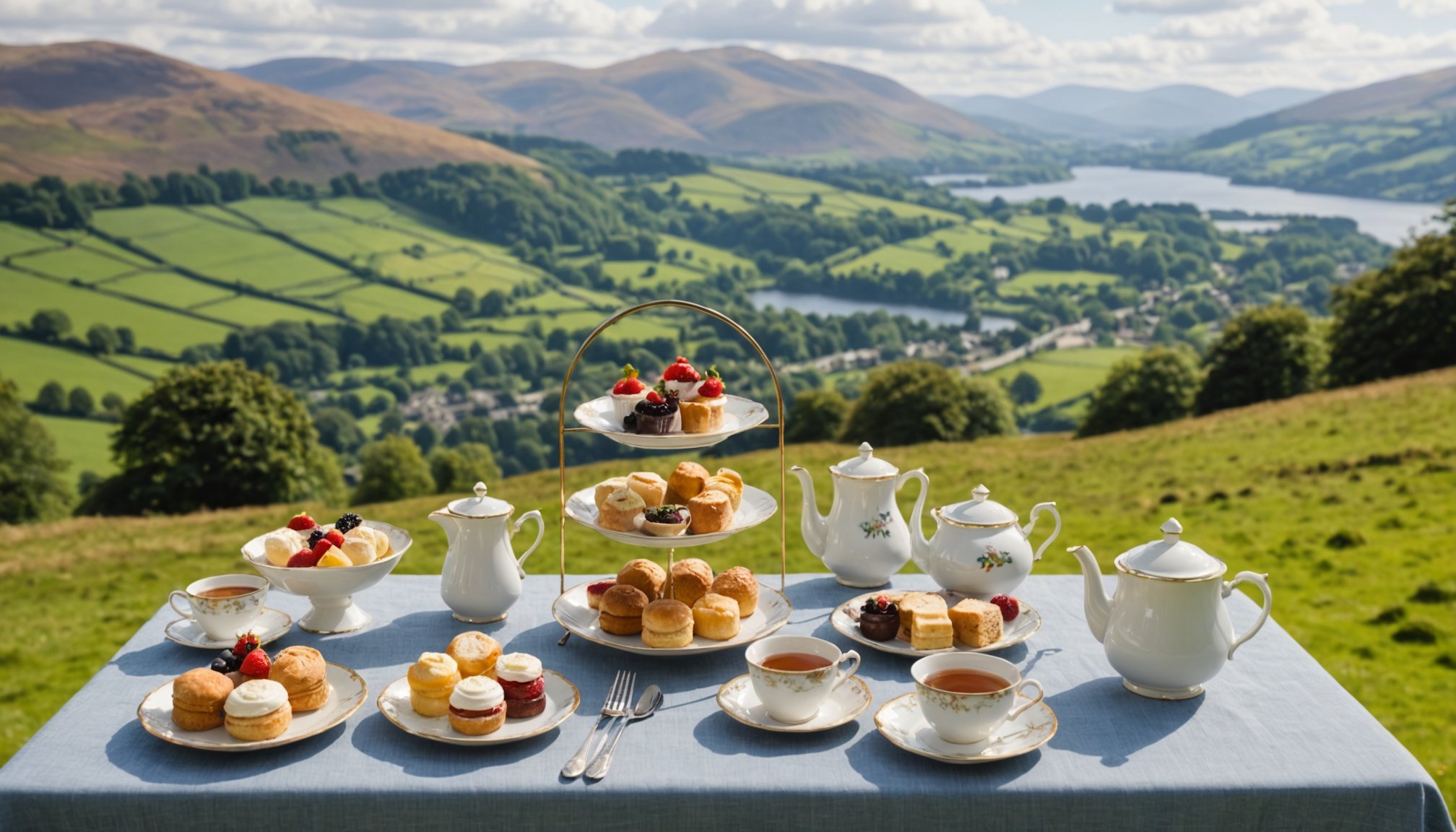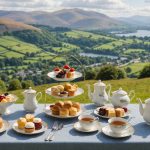Overview of Traditional Afternoon Tea
Delving into the historical origins of afternoon tea, this cultural phenomenon began in the early 19th century. Anna, the Duchess of Bedford, is credited with introducing the ritual to curb the hunger pangs between lunch and dinner. At that time, dinner was served quite late, and the afternoon tea soon became a customary practice among the upper class, featuring an assortment of fine teas and light snacks.
In British culture, afternoon tea is not merely about the refreshments but embodies a rich cultural tapestry of elegance and social interaction. It’s a quintessential part of British life, often associated with relaxation and camaraderie. This tradition has evolved, becoming a celebrated ceremony marked by grace and etiquette.
Topic to read : Discover the Top Live Music Venues: Your Ultimate Guide to London”s Best Pubs
A traditional English afternoon tea typically comprises several essential components. Among these are freshly brewed tea, indulgent sandwiches with fillings such as cucumber and smoked salmon, scones accompanied by clotted cream and jam, as well as a variety of cakes and pastries. These elements create a harmonious balance of flavors and textures, enhancing the overall experience.
Thus, a traditional afternoon tea serves not only as a delightful culinary experience but also as an embrace of cultural heritage, connecting participants with history and promoting a sense of community.
Also to read : Unlocking the Experience: Your Guide to Reserving an Exclusive Whisky Tasting at a Scottish Distillery
Best Venues for Afternoon Tea in the Lake District
Exploring the afternoon tea venues in the Lake District offers a delightful mix of tradition and breathtaking scenery. Each location presents a unique facet of this beloved ritual.
Featured Tea Houses
Top-rated tea houses such as the renowned Betty’s Tea Room are beloved for their traditional settings and impeccable service. Known for their scone mastery, these venues offer an array of specialty teas sourced globally. The opulence of their interiors often reflects classic English elegance, featuring warm tones, plush seating, and vintage decor which transport visitors to a bygone era.
Hidden Gems
Seek out lesser-known establishments, like the charming Café Bon Bon, for a more intimate experience. These hidden spots offer uniquely crafted teas and artisan pastries that are a joy to discover. They are often nestled in quaint corners of villages, providing a homey atmosphere and personalized service.
Scenic Locations
Embrace tranquility at venues such as The Outlook, offering picturesque views of rolling hills and serene lakes. With outdoor seating options, guests can savour their tea while marvelling at the Lake District’s natural beauty. Here, the combination of stunning vistas and fresh air adds an invigorating touch to the afternoon tea experience.
Types of Tea and Menu Offerings
Tea enthusiasts often have a wide array of tea varieties to explore. Popular options include classic choices such as Darjeeling, Earl Grey, and Oolong. Additionally, green teas like Matcha and Jasmine offer unique flavours and aromas. Each type brings a distinct character to the table, catering to various taste preferences and occasions.
Typically, signature menu items complement afternoon tea, enhancing the overall experience. For instance, freshly baked scones with clotted cream and jam are a staple, providing a traditional British touch. Fancy finger sandwiches, often filled with cucumber, salmon, or egg salad, make excellent savoury pairings. Not to be overlooked, petite pastries and cakes add a sweet, indulgent finish.
Seasonal variations in menu offerings add creativity and freshness to the afternoon tea experience. In spring, floral and fruity teas are often favoured, perhaps paired with light, citrus-flavoured desserts. Come autumn, heartier brews with spices, like Chai, take centre stage alongside pumpkin or apple-infused delicacies.
This dynamic combination of tea varieties and menu items ensures that there is always something new to savour, inviting both newcomers and seasoned tea drinkers alike to enjoy this delightful tradition.
Planning Your Afternoon Tea Experience
Delve into the essence of a quintessential afternoon tea by carefully planning your visit. The key is understanding the nuances of cultural etiquette that accompany this social delight.
Tips for Reservations
Securing a reservation at a prominent venue requires foresight. To ensure an optimal experience, book ahead, especially during peak times like weekends and holidays. It’s advisable to call early for venues known to draw crowds. When making reservations, consider any special requests or dietary considerations— most establishments are eager to accommodate. Whether you seek gluten-free options or a vegan selection, informing the staff during booking can make a significant difference.
Dress Code and Etiquette
Embrace the tradition by adhering to the expected dress code. While formal attire isn’t always necessary, smart casual is often recommended. The experience is enhanced when one is aware of the dos and don’ts: gently spread cream and jam, hold the teacup’s handle lightly, and engage in soft conversation. Manners and social etiquette are paramount, enriching this ceremonious occasion.
Enhancing the Experience
For an enriched experience, pair your teas with complementary menu items. Consider an excursion to local attractions, like nature walks or historic tours in the Lake District, either before or after your tea experience. These additional cultural engagements lend depth to an already rewarding outing.
Reviews and Testimonials
Afternoon Tea Reviews often reveal much about a venue’s unique offerings and charm. Patrons typically share their guest experiences online, providing potential visitors with invaluable insights. From the ambience of a venue to the quality of the tea and pastries, reviews highlight aspects that might influence someone’s choice. One guest mentioned the exquisite presentation of a three-tiered stand brimming with scones, finger sandwiches, and delicate pastries as a memorable experience at a specific establishment. This level of detail in reviews often captures the essence of an afternoon well spent.
While seeking the quintessential afternoon tea experience, many enthusiasts rely heavily on these reviews. They highlight both exceptional and subpar offerings, aiding in refining choices. For example, a review praising the attentiveness of the staff or the freshness of the ingredients can sway someone’s decision. Conversely, feedback about a rushed service or limited tea selection might deter a visit.
It’s essential to consider such testimonials as snapshots of individual experiences rather than definitive judgments. Although unique perspectives prevail, when many guests echo similar sentiments, a clearer picture of a venue’s reputation emerges, guiding new patrons toward an informed choice.











